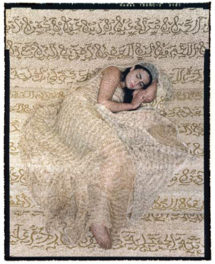
View of the Farnese Gallery, Rome, Francesco Panini, about 1775, pen and black ink and gray wash over black chalk. The J. Paul Getty Museum, 92.GG.16
At a time when we’re accustomed to viewing art in museums—and often in galleries that more or less resemble a white cube—it’s worth thinking back a few centuries to the way many of the paintings and objects in collections like the Getty’s were originally displayed. This was the task set for the scholars at the recent conference Display of Art in Roman Palaces 1550–1750, organized by the Getty Research Institute.
Why this focus on Baroque Rome? The obvious answer is that Rome was a major capital enjoying a building boom of palaces, as well as the seat of the papal court: important, influential, and wealthy. Rome provided a model for how the privileged should live in all of Europe. Not only the landed nobility, but also the pope and 70 cardinals—princes of the church who lived in princely splendor—maintained residences in Rome, not to mention ambitious families aspiring to get one of their own promoted into the ranks of those cardinals.
It was the great age of nepotism (from nipote, the Italian word for “nephew”), an excellent time to be the nephew of a pope, first in line for lucrative offices and for the funds to build magnificent palaces to fill with paintings by Caravaggio or sculptures by Bernini.
Rome’s elite population created a culture of demand, making the city a magnet for people with the skills to design and furnish their palaces, entertain them with music and poetry, restore the antiquities dug up in their lands, and paint frescoes that glorified their families and implied that even the city’s most parvenu residents had descended from Caesar himself.
Rome was a city with a hundred-plus centers of diplomacy and ceremony. All day long, business was conducted in palaces that functioned as home offices, which entailed a perpetual paying of calls and receiving of visitors. Protocol for such visits was elaborate, governed by an exquisitely calibrated etiquette that required new books of conduct and ceremony to tell people who was more important than whom, how to greet guests according to rank, how to seat them and on what kind of chair, and exactly how much more distance—measured in footsteps—the less important of two people must advance toward the other in a diplomatic encounter. The plans of the palaces evolved to create a pathway through the architecture in which the display of furnishings and images coded and shaped a ceremonial space.

Section of a Palace with Carriage, Andrea Francesco Nicoletti, 1709 (?), pen and black ink with watercolor. Gabinetto Comunale delle Stampe, Rome
Scholars at the GRI conference discussed the processes by which movable and immovable media, such as architecture, frescoes, tapestries, bronzes, and furniture, were integrated into ensembles and environments in which people conducted their lives.
It was in this period that independent paintings on canvas—a recent invention—suddenly became a hotly collected commodity. Specialized spaces were created to display such paintings, and the picture gallery came into being. Early on, the term gallery meant simply a long, relatively narrow passageway, but soon the idea of covering the walls of such rooms with pictures became an irresistible fashion for all of Europe. The galleries at the J. Paul Getty Museum and the Louvre are direct descendants, and the word gallery came to be used for public museums, as in the National Gallery in London or Washington, D.C.
Naturally, people were curious to see the splendid art displayed in these Roman palaces, and during this period a genuine tourist industry grew up. A resourceful, highly placed servant, the maestro di casa for example, might even author a little guidebook to the art in the palace to save the nuisance of explaining the meaning of the frescoes or identify the artist of this or that sculpture.
Things got to the point that the principal residents began to feel the need for private spaces to retreat from the pressure of visitors. Rather than sleeping in the elaborate fanciful beds—or sculptures in the form of beds—in the drafty state bedroom, inhabitants would retreat to simpler, cozy quarters in the mezzanine floor.

Design for a State Bed, Filippo Passarini, engraving in Nuove invenzioni d’ornamenti d’architettura e d’intagli diversi utili ad argentieri intagliatori ricamatori et altri professori delle buone arte del disegno, 1698, pl. 29. The Getty Research Institute, 92-F282
One of the greatly influential trends of the Roman palace was the emergence of the designed interior; in other words, the taste for unified spaces in which art, architectural decoration, and furniture worked together to create “display as art.” Johann Paul Schor stands out as the leading “interior designer” of the age, and if you’ve been to the Getty Museum’s decorative arts galleries, you may have noticed his magnificent gilded side table. At least we think it’s a side table, but in fact the function of his extravagant sculptural form has refused to be pinned down, and some have speculated that it is part of the fittings for a spectacular coach.

Side Table, design attributed to Johann Paul Schor (called Giovanni Paolo Tedesco), about 1670, gessoed and gilt poplar. The J. Paul Getty Museum, 86.DA.7
Much of what scholars in the research project on the display of art in Roman palaces know about the contents of these palaces comes from inventories, and the GRI has its own treasure trove of some 800 copies of Roman inventories that are being transcribed into the database of the Provenance Index. The team of scholars who presented at the conference is now finishing up its research and collaborating on a book on the display of art in Roman palaces.




Comments on this post are now closed.